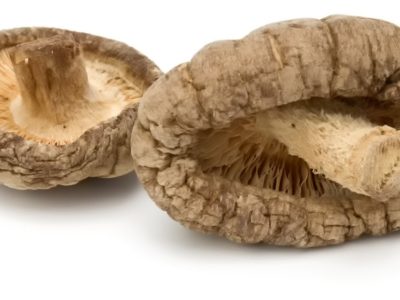This study focused on the antioxidant properties of three edible and medicinal mushrooms: Grifola frondosa, Grifola gargal, and Grifola sordulenta. The researchers aimed to enhance the antioxidant activity of wheat flour by using solid-state fermentation (SSF) with the mycelia of these mushrooms, resulting in biotransformed wheat grain (BWG) flour. Methanolic extracts of regular wheat flour and the BWG flours derived from G. gargal, G. sordulenta, and G. frondosa (referred to as GgWG, GsWG, and GfWG, respectively) were tested for their ability to scavenge free radicals (RS) and reduce Fe(III) ions (RP).
The results showed that the BWG flours had significantly higher antioxidant activity compared to regular wheat flour. The RS-EC50 values (the concentration needed to neutralize 50% of free radicals) were much lower in the BWG flours: 0.56 mg/mL for GgWG, 0.81 mg/mL for GfWG, and 5.80 mg/mL for GsWG, compared to 57.60 mg/mL for regular wheat flour. This indicates that the BWG flours were more effective at neutralizing free radicals. The ascorbic acid content responsible for this activity (RS-EQAA) was highest in GfWG (71.73 mg/g), followed by GgWG (14.46 mg/g) and GsWG (3.02 mg/g), while it was lowest in regular wheat flour (0.25 mg/g).
Similarly, the RP-EC50 values (the ability to reduce Fe(III) ions) were lower in the BWG flours: 0.55 mg/mL for GgWG, 0.64 mg/mL for GfWG, and 4.20 mg/mL for GsWG, compared to 55.00 mg/mL for regular wheat flour. This indicates that the BWG flours had greater reducing power. The ascorbic acid content responsible for this reducing capacity (RP-EQAA) was very high in GfWG (193.67 mg/g), followed by GgWG (31.42 mg/g) and GsWG (8.74 mg/g), whereas it was only 0.56 mg/g in regular wheat flour.
The study also found that the high gallic acid content was consistent with the observed RS-EQAA and RP-EQAA values, suggesting a strong antioxidant presence in the BWG flours. Thin-layer chromatography (TLC) analysis indicated that the antioxidant activity in the BWG flours could be linked to the presence of phenolic compounds. These findings suggest that wheat flour’s antioxidant value can be significantly enhanced through SSF with Grifola species, offering a valuable food alternative with improved health benefits.
Postemsky, P., Curvetto, N. 2013. “Enhancement of Wheat Grain Antioxidant Activity by Solid State Fermentation with Grifola spp.” Journal of Medicinal Food 00 (0) , 1-7. doi: 10.1089/jmf.2013.0108.



